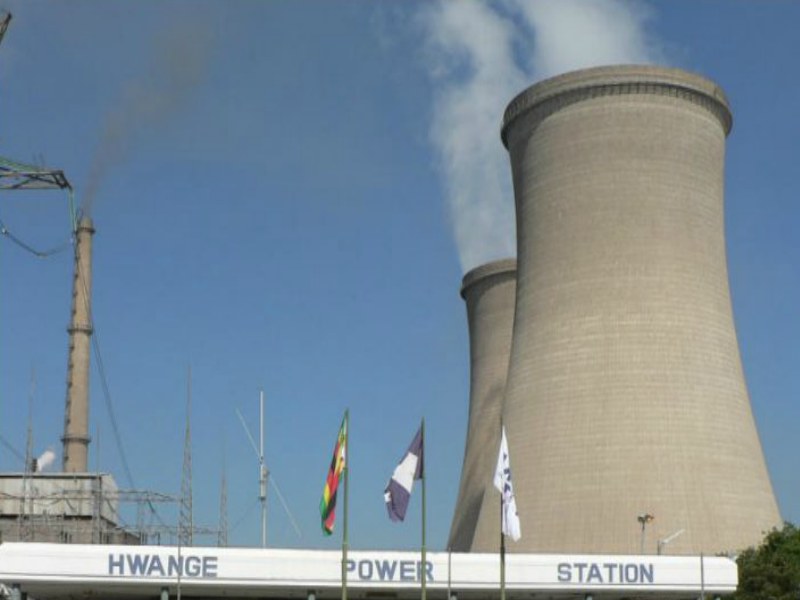Zimbabweans may continue to experience continuous power outages as the country’s electricity supply collapses under failing infrastructure at Hwange Thermal Power Station and dangerously low water levels at Kariba Dam.
Homes have been plunged into darkness for more than 18 hours at a time, crippling businesses, freezing productivity, leaving citizens in the dark – both literally and figuratively – as they await ‘meaningful’ action from the government.
On Wednesday in Parliament, Minister of Energy and Power Development Edgar Moyo attempted to explain the worsening crisis, citing the dysfunction at Zimbabwe’s main power generation facilities.
Engineer Leslie Mhangwa, a Member of Parliament, who also chairs the Energy Parliamentary Portfolio Committee, had questioned the minister on the apparent discrepancy between winter electricity generation levels and the current power supply, which is now forcing some areas into “over 24 hours” of continuous load shedding.
“From the statistics from Zimbabwe Power Company, currently we are generating almost the same power we were generating in winter,” Mhangwa stated.
“In winter, we had shorter load shedding with the high usage from winter and the winter wheat crop. Yet now we are having more than 24 hours load shedding. Is there a crisis that has not been notified to the people or is it a new Government policy that has changed?”
Minister Moyo disputed Mhangwa’s assessment, presenting recent figures to illustrate the steep decline in electricity production.
“The power that we were generating in winter is not the same as the power being generated now,” Minister Moyo clarified.
“Currently, at Hwange 7 and 8, we are running at full throttle and generating 640 megawatts. At Hwange Stages 1 and 2, during winter, we were at peak capacity at 420 megawatts. Now, we are doing 260 megawatts, and as a result of the breakdown of other units, we are now generating power using just three units.”
Adding to the problem, reduced water levels at the Kariba Dam have severely limited hydropower output.
“In Kariba during that time, we were able to do up to 300 megawatts but now we are only able to do 100 megawatts. We were allocated 8.4 billion cubic metres of water for Lake Kariba for use this year but, at some point, we had to get up to 500 megawatts from Kariba to meet the high demand. That has significantly reduced the water levels, and we are now left with about 1 billion cubic litres of water, which can generate 100 megawatts up to the end of the year,” Moyo explained.
Mhangwa continued to press the minister, noting inconsistencies in the recent power generation statistics and highlighting specific days when power output reportedly exceeded 1 100 megawatts, yet load shedding persisted.
“On 4 August 2024 we generated 1,128 (megawatts), in September 2024 we generated 917 and on 29 August 2024, we generated 1,108 ,” the engineer said.
“Today, we are supposed to have generated 1 128 but we are worse off today than when we were generating less. Something is inaccurate there, Hon. Minister.”
The minister acknowledged the daily fluctuations but pointed to solar power as a factor in these variations.
“Some of the power that is being referred to comes from solar, and solar by its nature is intermittent,” Moyo explained.
“In terms of the power generated every day, you may find that you may vacillate between 20 and 70 megawatts depending on the climate conditions on that day.”
Members of Parliament (MPs) also raised concerns over the fairness in electricity distribution, questioning the policy that leaves certain areas with extended access to power while others face prolonged outages.
MP John Kuka asked about measures to provide equitable distribution to households.
“What is the current national energy policy regarding electricity distribution in light of limited power generation to ensure fairness and equality in terms of hours available for all consumers?” Kuka asked.
Moyo acknowledged that certain “strategic” areas exempt from load shedding, such as hospitals and key industries, lead to unequal access.
“We have areas that cannot be load shed because of their strategic and critical nature,” the minister explained.
“For example, around Mpilo Hospital in Bulawayo, residential areas like Barbourfields and Mzilikazi benefit because there is no dedicated line specifically for Mpilo hospital. What that means is that we are going to have more access to power in those areas than in other places, like Nkulumane.”
As the power crisis deepens, MP Corban Madzivanyika called for the Finance Ministry to channel unallocated reserves towards repairing Hwange’s ageing units, while Dr Thokozani Khupe proposed that Moyo present a comprehensive ministerial statement.
“Once he brings in the Ministerial Statement, questions to do with energy will not be coming every time and again because the Minister will explain to the public to say, this is the problem that we have, and this is what we are doing,” Khupe said.
Minister Moyo is expected to provide a ministerial statement next week, detailing the government’s efforts to resolve the power crisis, timelines for infrastructure improvements, and guidance on alternative energy options for the public.
However for many Zimbabweans, the minister’s words provide little reassurance amid escalating blackouts and mounting frustration over the government’s failure to bring any real solutions to this escalating national emergency.
“This situation is very stressful, at least some of us can access electricity at work but what of those who remain at home the whole day? Children come back from school and find no electricity, they can’t watch cartoons and everyone in the home is frustrated,” said Witness Bhebhe.


Zesa has failed just like ZANUPF has destroyed Zimbabwe…